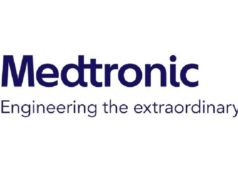While much has been done in the past decade to advance the field of neuromodulation, some investigators believe only small steps have been made toward finding out the potential of neuromodulation therapy and therefore a lot more work needs to be done.
Further, Sam Eldabe (consultant in Pain Medicine & Anaesthesia, James Cook University Hospital, Middlesbrough, UK) maintains that there needs to be more care and attention in the steps being taking in neuromodulation research.
Speaking at the Neuromodulation Society of the UK and Ireland’s annual meeting (NSUKI; 3–4 November, Manchester, UK), Eldabe pointed to a host of questions that remain unanswered: the incidence and prevalence of failed back surgery syndrome; the profile of responders versus non-responders and the validity of trials in spinal cord stimulation; the “minefield” of therapy options; and the strength of national data.
On the incidence of failed back surgery syndrome, Eldabe said that much work needs to be done there. “We continue to classify failed back surgery patients as a single group of predominant low back pain or predominant leg pain. Now those of you who, like me, sit in clinics will know that there is a very small group who has leg pain only, a very small group who has back pain only and the majority are somewhere in between and they are not constant in their distribution of their leg and back pain, this changes from week to week and sometimes from year to year. So there is a need to phenotype this disease and for us to be able to speak about this disease with some more certainty.”
Together with an international consortium Eldabe and his team have extracted data from the CPRD (Clinical Practice Research Database) and the HES (Hospital Episode Statistics) database in order to look at what the incidence of failed back surgery syndrome could be. They looked at patients who have had lumbar spine surgery for pain and who have had either a second operation, a referral to a pain clinic or a spinal cord stimulator implanted. The data, he reported, is consistent that on average 20% of the patients are going in with failed back surgery syndrome.
When it comes to responders versus non-responders and the validity of trialling patients pre-implant, Eldabe and his team are conducting an investigation in the TRIAL-STIM study. It will ask the question: do trials determine long-term outcomes and do they have a cost utility or not? One hundred patients will be randomised in the study; 50 to have a trial of spinal cord stimulation and 50 to have no pre-trial but only an on-table trial. The patients will be followed up at three months and at six months. The primary outcome measure is the numerical rating scale. Parallel to this, the investigators will conduct a qualitative analysis to ask patients whether they valued their trial or whether they felt it was painful and wasteful. Further, they will do a health economics analysis to ask the question: are trials more expensive than direct implants?
Moving to device options, Eldabe pointed out that when it comes to selecting therapies, there is a “minefield” of choices. In recent years there have been many device comparison studies, and even wave comparison studies, but there remain a lot of questions to answer.
Two of the most recent head-to-head comparison device studies have been the ACCURATE study and the SENZA-RCT study—both are industry-sponsored studies targeting FDA approval for a device, and both are non-inferiority studies with superiority analysis and both are conducted in the USA.
“If industry designs a study, it is not designed to fail, it is usually designed to succeed, and this is no surprise to us. However, when you think about it, you have to agree that the data presented to you is the data, and you cannot argue whether this data is false. The fact is that industry has helped advance our field, and industry-sponsored studies are generally far more rigorous than, in my experience, academic studies. The monitoring, the methodology, they study larger groups of patients, they are more often registered and they involve international groups. However, there are things that we need to be careful about,” Eldabe cautioned.
Turning to the 24-month results of the SENZA study, he singled out the responder analysis which is displayed in a “tornado graph” where each line represents a single patient in the study. The graph shows that there is 50% pain relief in 76% of the group, and a 50% responder rate in 49% of the group.
“If we obsess about the control group, and I have been doing neuromodulation for more than 20 years, the results in back pain patients at 24 months are 50% of patients are reporting 50% pain relief, I can never get near that, not at two years,” he said.
In the ACCURATE study, he pointed out, you can find the same phenomenon—at one year, there are 50% responders, and in the control group at 12 months 70% of the patients implanted with a traditional stimulator are reporting 50% pain relief.
“If those were my results I would not do anything else. But the fact is we know that at six months, or at three months, patients with SCS who have CRPS come back and report loss of paraesthesia, failing of paraesthesia in the foot and in the paraesthesia travelling upwards to the knee and the thigh. So how do we explain this phenomenon? You could say there is a Hawthorne effect, that these patients are getting better because they are enrolled in a study. Could we say that there is a placebo effect here? Difficult, because if you have been randomised into a study that offers a new device rather than control it is likely that you are getting a nocebo effect rather than placebo effect. We are then left with one explanation that is really plausible; that this is a different population, this is not a population of pain clinic patients because we know that we cannot achieve this. It is quite a difficult conclusion to come to. Is it possible that people in the USA are different from people in Europe? Yes, actually it is,” Eldabe surmised.
As evidence, he presented a paper which looks at the placebo response in patients particularly in the USA over time. He showed that patients in the USA are developing a greater placebo response as time advances and as trials get bigger.
“In the conclusion of this paper, in 1996 the difference between medication and placebo was 27%, the difference between medication and placebo nowadays is 9% and the results are mainly driven by US trials. In order for us to understand the feasibility of a head-to-head trial can we redo this work? Is it worth our while redoing this work? Let us try to understand what is involved. You need to understand that we need to explore the placebo and the nocebo response because it has quite a big role to play when we enrol patients in head-to-head trials. With the placebo effect you see positive expectancies and improved pain relief, and with the nocebo effect people have negative expectancies, worsened pain relief,” he explained.
As an example of a classic nocebo response Eldabe presented the PROCESS study. In the control group, 2% (1/47) of patients expressed 50% pain relief at one month through the totality of pain medication. “Are we buying that? We cannot buy that either. But in a group of patients who have had all these interventions in the past, who know that these interventions have not worked for them, yes you can believe it because these patients are nocebo conditioned—they came into the study with preconceptions that it is not going to work. This works in pharma, but is it really relevant in device studies? The fact is yes it is.”
Eldabe used a number of examples from trials which seem to point to the implication of patient expectations based on how much information they have before the trial.
“This is a good example of patient expectations determining outcomes: these are patients enrolled in a sham acupuncture study versus real acupuncture. The main questions that were asked of the patients were ‘do you believe that acupuncture works?’, ‘do you believe it is going to work for you?’, and the answer was that patients with higher expectations about acupuncture had a larger clinical benefit. It did not actually matter whether they had the real acupuncture or the sham, it was what they believed that drove the response,” he said.
Finally, turning to what the future holds for neuromodulation research, Eldabe pointed out that up to now, investigators have worked quite hard in small groups, they have worked in silo and along industry alignments. “We have done what we think are well conducted but small studies with small impact, we relied on industry to produce the large data and to show us the way forward. Our real-world data came in small chunks and it was of largely low quality. In that remit, there is a role for a registry here to give our real world data the higher quality it deserves and to produce large chunks that we can gather information from,” he said.
Further to the pursuit of a neuromodulation registry, Eldabe advocated for the need for the national society (in this case, NSUKI) to approach the National Institute of Health Research (NIHR) for funding for future trials.
“The National Institute of Health Research is a very rich organisation and the two bits that we are interested in (neurology and muscular) are reasonably well funded. There is a role for NSUKI as the national society to develop a research strategy and approach NIHR and say that this is our research strategy and we want to do this. Other societies have done this with an excellent effect,’’ he reported.
Eldabe added that there is also room for the neuromodulation society as a whole to combine forces for multisite, multi-investigator initiated trials.
“I think that this is something that is quite low-hanging fruit because applying to the NIHR is extremely difficult, it is difficult to get the funding, it is extremely competitive, I do not disagree with that, but it is not impossible and the funding from the NIHR is much more generous than what you get from industry and the conduct of the trial is rigorous. However, working together to produce investigator initiated trials that are meaningful is the way forward for this community,” Eldabe concluded.













